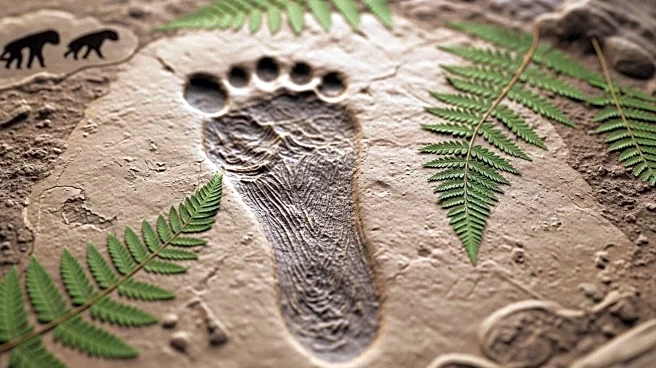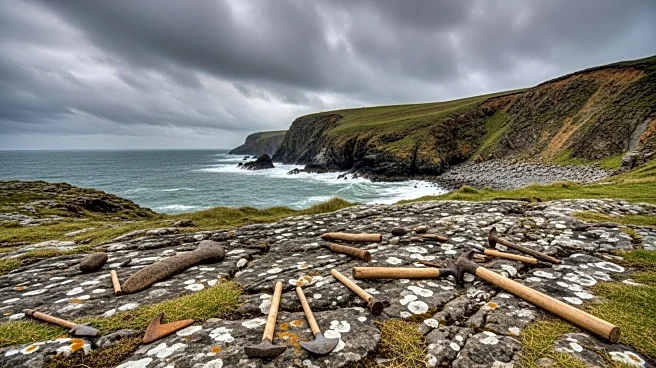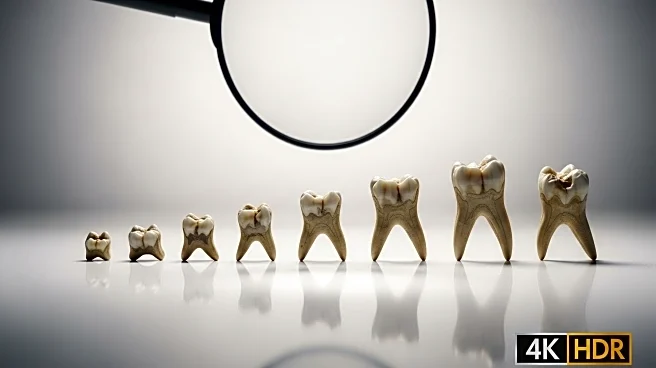What's Happening?
Recent fossil discoveries at the Dmanisi site in Georgia have provided new insights into the development of early Homo species, challenging traditional views on human childhood. The remains, dated to approximately 1.77 million years ago, suggest that cultural learning and extended childhood may have played a significant role in human evolution. Researchers, including Christoph Zollikofer from the University of Zurich, utilized synchrotron imaging to examine dental microstructures, revealing unexpected growth patterns. The study indicates that early Homo species may have experienced faster molar crown growth than any other known hominin or living great ape, suggesting a prolonged childhood supported by adult care. This discovery reshapes the understanding of early human social structures and the interplay between brain development and cultural transmission.
Why It's Important?
The findings from the Dmanisi site have significant implications for understanding human evolution, particularly the role of extended childhood in shaping social and cognitive development. By suggesting that prolonged childhood preceded brain expansion, the study challenges the traditional 'big brain – long childhood' concept. This has potential impacts on anthropological theories regarding the evolution of social behaviors and cultural transmission. The research highlights the importance of intergenerational support and communal living in early human societies, which may have facilitated the sharing of knowledge and skills necessary for survival. These insights contribute to a deeper understanding of the evolutionary processes that led to the development of modern Homo sapiens.
What's Next?
The study opens new avenues for research into the evolutionary dynamics of early human societies. Researchers are likely to continue examining fossil evidence to further explore the relationship between childhood length and brain development. This could lead to a reevaluation of existing theories on human evolution and the factors that contributed to the development of complex social structures. Additionally, the findings may prompt further investigation into the role of communal living and cultural transmission in shaping human ancestry. As technological advances in imaging techniques continue, scientists may uncover more detailed information about the growth patterns and social behaviors of early hominins.
Beyond the Headlines
The discovery at Dmanisi emphasizes the ethical and cultural dimensions of human evolution, particularly the importance of community support and intergenerational knowledge transfer. It suggests that the nurturing of young individuals and the care for older members of society were crucial in shaping early human social conventions. This challenges modern perceptions of individualism and highlights the evolutionary benefits of communal living. The study also underscores the potential for fossil evidence to reshape long-held beliefs about human ancestry and the development of social behaviors.













